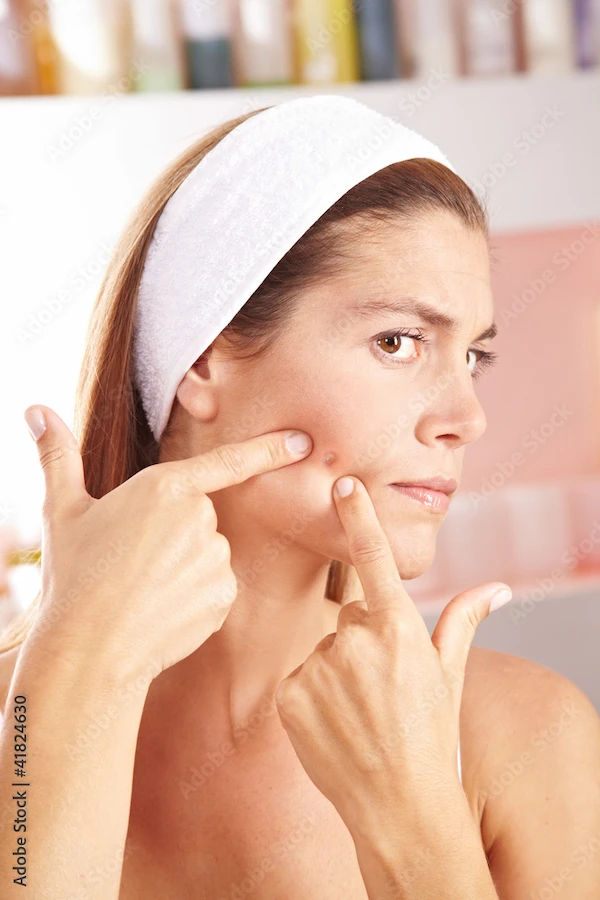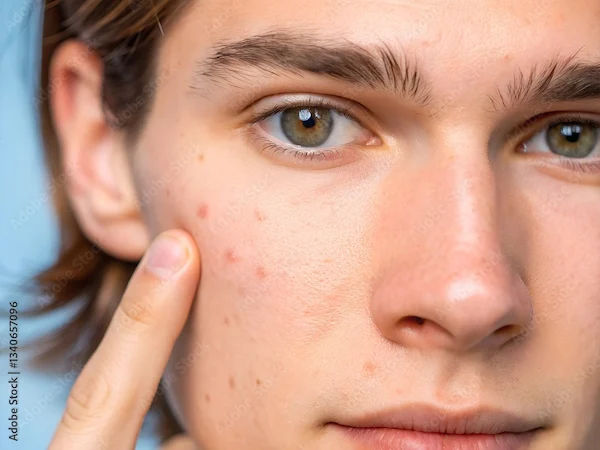Antibiotics for Acne
Discover how antibiotics can effectively treat acne. Learn about types, benefits, potential side effects, and tips for using antibiotics to achieve clear, healthy skin.

Written by Dr Sonia Bhatt
Last updated on 3rd Jul, 2025
Acne is a common skin condition that affects millions of people worldwide, regardless of age or skin type. While it is often associated with puberty, acne can also persist into adulthood. If you've struggled with persistent pimples, blackheads, or cystic acne, you might have considered antibiotics as part of your treatment plan. But how effective are antibiotics for acne, and what should you know before starting them?
In this article, we will explore everything you need to know about using antibiotics for acne, including how they work, when they’re prescribed, potential side effects, and alternatives to consider. By the end, you'll have a clearer understanding of whether antibiotics are the right option for your acne management
How Do Antibiotics Help Acne?
Acne is often caused by an overgrowth of Propionibacterium acnes (P. acnes), a bacterium that thrives in clogged hair follicles. When excess oil (sebum) and dead skin cells block pores, P. acnes multiplies, triggering inflammation. This leads to the characteristic redness, swelling, and pustules of acne.
Antibiotics for acne work in three main ways:
Reducing Bacterial Growth: They decrease the number of acne-causing bacteria on the skin, which helps prevent further breakouts.
Decreasing Inflammation: Many antibiotics have anti-inflammatory properties, reducing redness and swelling.
Preventing Future Breakouts: By controlling bacterial growth and inflammation, antibiotics can help keep your skin clear over time.
Types of Antibiotics for Acne
There are two main types of antibiotics used for acne treatment: topical and oral. The choice between them depends on the severity of the acne and how well other treatments have worked.
1. Topical Antibiotics for Acne
Topical antibiotics are applied directly to the skin and are usually prescribed for mild to moderate acne. These medications target bacteria on the surface of the skin, reducing bacterial levels and inflammation. Commonly used topical antibiotics include:
Clindamycin
Available in gel, lotion, or solution form, clindamycin is effective at reducing P. acnes bacteria and has anti-inflammatory effects, helping to reduce redness and swelling.Erythromycin
Like clindamycin, erythromycin is applied topically to kill bacteria and reduce inflammation. It is sometimes combined with benzoyl peroxide to improve effectiveness and prevent antibiotic resistance.Dapsone
Dapsone has both antibacterial and anti-inflammatory properties, making it particularly effective in treating inflammatory acne. It can help reduce the redness and swelling of pimples and pustules.
2. Oral Antibiotics for Acne
Oral antibiotics are typically reserved for moderate to severe acne that doesn’t respond to topical treatments. These antibiotics work throughout the body to reduce bacterial growth and inflammation. Common oral antibiotics prescribed for acne include:
Tetracyclines
Tetracyclines are one of the most common classes of antibiotics used to treat acne. They work by inhibiting bacterial protein synthesis, reducing both P. acnes bacteria and inflammation.
Doxycycline is often prescribed as a first-line treatment. It is taken once or twice daily but can cause photosensitivity, so it’s important to wear sunscreen and avoid excessive sun exposure.
Minocycline is another option, although it may cause side effects like dizziness and skin pigmentation changes with long-term use.
Sarecycline: Sarecycline is a newer oral antibiotic specifically approved for acne treatment. It belongs to the tetracycline class but is designed to have fewer side effects, making it a good option for patients who can’t tolerate other antibiotics.
Macrolides
Macrolides are alternatives for those who cannot tolerate tetracyclines or in specific acne cases.
Azithromycin is sometimes prescribed for acne and is taken less frequently (usually 2-3 times per week), which may help with patient compliance.
Erythromycin is another macrolide, though it is more commonly used in topical form due to gastrointestinal side effects when taken orally.
Trimethoprim/Sulfamethoxazole (Bactrim/Septra)
This combination antibiotic is typically used as a second-line treatment for acne, particularly when other antibiotics are ineffective. It inhibits bacterial DNA synthesis and can help manage acne in resistant cases.
Oral antibiotics should be used for the shortest duration necessary to minimise the risk of antibiotic resistance. To further reduce this risk, they are often combined with other treatments, such as benzoyl peroxide.
When Are Antibiotics for Acne Prescribed?
Antibiotics for acne are typically considered when topical treatments like benzoyl peroxide or salicylic acid fail to produce satisfactory results. Antibiotics are especially useful in cases of:
Cystic or Nodular Acne: Deeper, painful acne lesions often require antibiotics to control both inflammation and bacterial growth.
Inflammatory Acne: Red, swollen pimples (papules) and pustules are often treated effectively with antibiotics.
Persistent Acne: If acne does not respond to topical treatments alone, oral antibiotics may be necessary for more aggressive management.
Acne with Scarring Potential: In severe cases, antibiotics can help prevent new breakouts, reducing the risk of permanent scarring.
How Long Should Antibiotics Be Used?
The duration of antibiotic treatment depends on the severity of acne and the response to treatment:
Oral Antibiotics: These are usually prescribed for 6 to 12 weeks. If improvement is seen, the dermatologist may adjust the dosage or switch to other treatments.
Topical Antibiotics: Can be used for extended periods, often in combination with other treatments, but they should be regularly assessed for effectiveness and the risk of antibiotic resistance.
It’s important to complete the full course of antibiotics as prescribed, even if acne improves, to prevent resistance and relapses.
Side Effects and Risks of Antibiotics for Acne
While antibiotics can be highly effective for managing acne, they are not without risks. Some of the most common side effects include:
Antibiotic Resistance
Overuse or improper use of antibiotics can lead to resistance, meaning the drugs become less effective. To minimise this, always take antibiotics exactly as prescribed and complete the entire course.Digestive Issues
Antibiotics can disrupt the natural bacteria in your gut, leading to digestive issues like nausea or diarrhoea. In rare cases, this imbalance may result in more serious conditions, such as Clostridium difficile infections. Probiotics or fermented foods may help, but discuss any supplements with your doctor.Skin Sensitivity
Oral antibiotics like doxycycline can increase skin sensitivity to sunlight, raising the risk of sunburn. Use sunscreen and avoid prolonged sun exposure during treatment.Other Side Effects
Some oral antibiotics, particularly minocycline, can cause dizziness, headaches, or changes in skin and tooth pigmentation. If you experience unusual symptoms, contact your doctor immediately.
Alternatives to Antibiotics for Acne
If you’re concerned about the risks of antibiotics, or if your acne hasn’t improved with antibiotic treatment, several alternatives are available:
Topical Retinoids: These vitamin A derivatives, such as tretinoin and adapalene, prevent clogged pores and promote skin cell turnover, making them effective for acne management.
Benzoyl Peroxide: A popular acne treatment, it kills bacteria and reduces inflammation.
Hormonal Treatments: For women, oral contraceptives or spironolactone can regulate hormones that trigger acne.
Isotretinoin (Roaccutane): For severe acne resistant to other treatments, isotretinoin may be an option. This powerful medication requires close monitoring by a dermatologist but can provide long-term relief.
Conclusion
Antibiotics for acne can be a powerful tool for managing moderate to severe acne, especially when other treatments haven’t provided satisfactory results. They work by reducing bacteria and inflammation, helping to prevent new breakouts and improve the overall appearance of your skin. However, they should always be used responsibly and under the guidance of a dermatologist to minimise the risk of side effects, such as antibiotic resistance and skin sensitivity. Since acne treatment varies for each individual, working with a dermatologist to develop a personalised approach is essential for achieving clearer, healthier skin in the long term.
Consult Top Dermatologist
Consult Top Dermatologist

Dr. Hemalatha Naidu M
Dermatologist
5 Years • MBBS, MD (Dermatology)
Bangalore
Apollo 24|7 Clinic - Karnataka, Bangalore
(275+ Patients)

Dr. K Chetana
Dermatologist
10 Years • MBBS, MD ( Dermatology)
Hyderabad
Apollo 24|7 Clinic, Hyderabad

Dr Usha B K
Dermatologist
4 Years • MBBS,MD (Dermatology, Venereology & Leprosy), DNB (Dermatology, Venereology & Leprosy), Fellowship in Trichology
Bangalore
Apollo 24|7 Clinic - Karnataka, Bangalore
(50+ Patients)

Dr. Krupa Modi
Dermatologist
5 Years • MBBS, MD Dermatology, Venerology & Leprosy
Mumbai
B.A.E CLINIC, Mumbai

Dr. Imran Ali
Dermatologist
12 Years • MBBS ,MD
Hyderabad
Dermax Skin & Hair Transplant Clinic, Hyderabad


